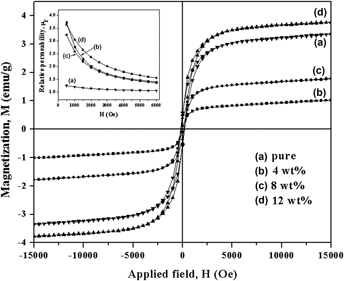Article contents
New synthetic methodology and magnetic properties of fcc Co–Ni nanostructured alloys embedded in KIT-6 matrix
Published online by Cambridge University Press: 13 July 2016
Abstract

Magnetic characteristics of nanocrystalline CoNi alloy materials embedded in silica matrix (KIT-6) have been investigated. CoNi alloys with different loading (4–12 wt%) were synthesized via a novel chemical reduction route. The materials are characterized by UV–VIS, IR, powder x-ray diffraction (XRD), transmission electron microscopy (TEM) and studied for their adsorption–desorption and magnetic properties. CoNi alloys crystallize in pure fcc phase with lattice parameters (a) and crystallite sizes in the range of 3.53(±2)–3.54(±2) Å and 13.6(±1)–16.3(±1) nm, respectively. TEM microscopy studies reveal nanocrystalline nature of the materials. Enhancement of magnetic moment with the increase in loading wt% for CoNi alloys embedded in silica matrix is observed. The values of coercivity tend to decrease after dispersion in silica matrix and thereafter increase with increasing loading wt% of various CoNi loaded samples. The observed magnetic properties have been explained on the basis of size, surface effects, and dipolar interactions.
- Type
- Articles
- Information
- Copyright
- Copyright © Materials Research Society 2016
References
REFERENCES
- 5
- Cited by



